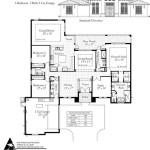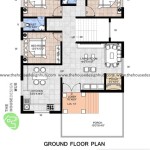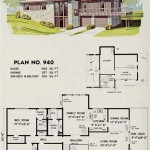House Plans on Slab: Essential Aspects You Need to Know
Whether you're an experienced homeowner or a first-time builder, choosing the right house plan is crucial. If you're considering a house plan on a slab, there are several key aspects you need to be aware of to ensure your project is a success.
What is a House Plan on Slab?
A house plan on slab is a type of construction where the house is built directly on a poured concrete foundation slab. The slab provides a stable and even surface for the house to rest on, eliminating the need for a basement or crawl space.
Advantages of House Plans on Slab
- Cost-effective: Slabs are typically less expensive than basements and crawl spaces, making them a budget-friendly option.
- Energy-efficient: Slabs provide better insulation than basements, reducing energy costs.
- Quick and easy to build: Building on a slab is faster and easier than building with a basement or crawl space.
- No moisture issues: Slabs are less prone to moisture problems than basements, providing a healthier indoor environment.
Disadvantages of House Plans on Slab
- Limited storage space: Without a basement or crawl space, there's less storage space available.
- Potential for cracking: Slabs can crack due to shifting soil or temperature changes.
- Not suitable for all soil types: Slabs are not suitable for all soil types, such as expansive soils.
Important Considerations for House Plans on Slab
- Soil conditions: The soil conditions at your building site will determine if a slab foundation is feasible.
- Climate: Extreme temperature changes can affect the stability of slabs.
- Drainage: Proper drainage is essential to prevent moisture problems.
- Reinforcement: Slabs typically require reinforcement with rebar or wire mesh to prevent cracking.
- Insulation: Insulating the slab is important for energy efficiency and comfort.
Design Considerations for House Plans on Slab
- Floor plan: The floor plan should be designed to minimize the number of load-bearing walls, reducing the risk of cracking.
- Exterior walls: Exterior walls should be well-insulated to reduce heat loss and gain.
- Roofing: The roof should be designed to shed water efficiently to prevent moisture penetration.
- Windows and doors: Windows and doors should be energy-efficient and properly sealed to minimize air leakage.
Conclusion
House plans on slab offer several advantages, including cost-effectiveness, energy efficiency, and speed of construction. However, it's essential to carefully consider the soil conditions, climate, drainage, reinforcement, and insulation factors before selecting this type of foundation. By understanding the essential aspects of house plans on slab, you can make an informed decision that will result in a successful and comfortable home.

3 Floor Plan Of The Concrete Slab On Ground Floored Test House Source Scientific Diagram

Pin On Plan Ideas

Pin On Fish N Game

Pin On Wohimmerideen

The House Designers Thd 4531 Builder Ready Blueprints To Build A Spacious Craftsman Plan With Slab Foundation 5 Printed Sets Com

Clearview 2400 S House Plans Beach Floor Square Open

European House Plan With Slab Foundation 1889

Slab On Grade Home Plans By Tjb Homes

Pin On Quick Saves

House Plans With Slab Foundation








